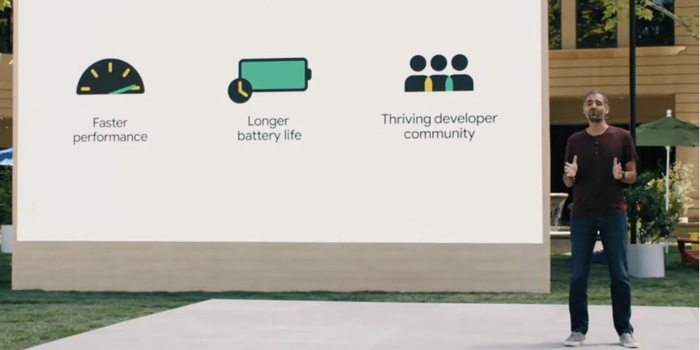
Tizen is no more, long live Wear OS
Fitbit, Samsung and Google have revamped Wear OS. The latest version of the operating system designed for smartwatches and other wearables is supposed to be faster, better and more user-friendly.
Fitbit is no more. Not as a name, but as a company. It now belongs to Google. Samsung's Tizen is no more. The company is now working with Google. The result is a «new era» for the new wear ecosystem. Simply put, Wear OS is improved, driven by the acquisition of Fitbit and Samsung's willingness to cooperate.
Cynics might now ask: «Will it finally be useable?»
We’ll get the answer in autumn. That’s when the new Wear OS is rolled out. However, what goes without saying is that future Samsung smartwatches will no longer feature Tizen, but Wear OS.
More battery life, more tiles
The speakers at Google I/O want you to know mainly one thing: the new Wear OS means longer battery life for your smartwatch. How much longer? Unknown. Under what conditions? Unknown. However, it’s nice that Google seems to have realised that Wear OS not only can’t keep up with the competition, but also drives smartwatch manufacturers such as Garmin and Suunto – kind of – to their own software development.
Wear OS is supposed to become faster. Apps are said to load up to 30 percent faster and transitions between apps and screens are said to be smoother.
Many of the innovations that were announced are things that Wear OS already does in one way or another. The only question is: what’s new? The navigation is changed. Sort of. A lot is still very vague.
For developers: new APIs
The Google/Ex-Fitbit/Samsung conglomerate also wants the operating system to become more interesting for programmers and app developers. Tiles can be created by any third party. Tiles are the screens you get to when you swipe left or right on the main dial.
Google has provided programming interfaces, known as APIs, to make this possible quickly and easily.
Not much more is known about Wear OS yet. We'll know more in autumn – or as soon as the first new watches hit the market.
Update 19 May 2021, 8:00 a.m.
First details about specific updates and innovations in Wear OS are gradually published:
- Spotify supports offline playback. The app is said to have been completely rebuilt.
- YouTube Music also supports offline playback.
- Double-tapping the side button will take you to your recently used tabs.
- Google Maps on Wear OS is said to be made independent from the phone over the course of 2021.
- Google Pay on Wear OS is being rolled out in 26 additional countries. Which ones? That’s still unknown.
- Fitbit is integrated into Wear OS and functions as a fitness tracking app.
- Wear OS is supposed to adapt to your Android 12 phone in terms of colour and design.
- On the developer side, the design of watch faces for Wear OS is said to become easier.
- Wear OS is currently working with various app developers from the fitness and sports area. Among them myfitnesspal, C25k and Strava.
- The current Samsung smartwatches with Tizen are supposed to receive updates for another three years, but not an upgrade to Wear OS.
Journalist. Author. Hacker. A storyteller searching for boundaries, secrets and taboos – putting the world to paper. Not because I can but because I can’t not.
From the latest iPhone to the return of 80s fashion. The editorial team will help you make sense of it all.
Show all